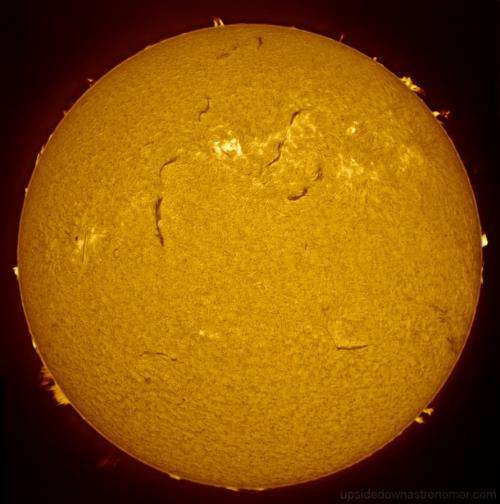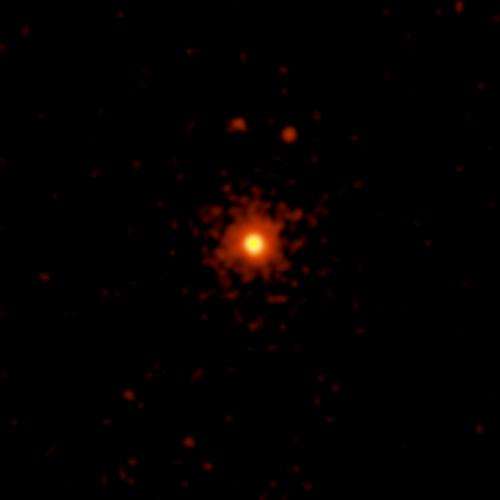What is the Smallest Star?

Space and astronomy is always flaunting its size issues. Biggest star, hugest nebula, prettiest most talented massive galaxy, most infinite universe, and which comet came out on top in the bikini category. Blah blah blah.
In an effort to balance the scales a little we're going look at the other end of the spectrum. Today we're talking small stars. First, I'm going to get the Gary Coleman and Emmanuel Lewis joke out of the way, so we can start talking about adorable little teeny tiny fusion factories.
We get big stars when we've got many times the mass of the Sun's worth of hydrogen in one spot. Unsurprisingly, to get smaller stars we'll need less hydrogen, but there's a line we can't cross where there's so little, that it won't generate the temperature and pressure at its core to ignite solar fusion. Then it's a blob, it's a mess. It's clean-up in aisle Andromeda. It's who didn't put the lid back on the jar marked H.
So how small can stars get? And what's the smallest star we know about? In the traditional sense, a star is an object that has enough mass and pressure in its core that it can ignite fusion, crushing atoms of hydrogen into helium.
Fusion is exothermic, releasing energy. It's this energy that counteracts the force of gravity pulling everything inward. That gives you the size of the star and keeps it from collapsing in on itself.
By some random coincidence and fluke of nature our Sun is exactly 1 solar mass. Actually, that's not true at all, our shame is that we use our Sun as the measuring stick for other stars. This might be the root of this size business. We're in an endless star measuring contest, with whose is the most massive and whose has the largest circumference?
So, as it turns out, you can still have fusion reactions within a star if you get all the way down to 7.5% of a solar mass. This is the version you know as a red dwarf. We haven't had a chance to measure many red dwarf stars, but the nearest star, Proxima Centauri, has about 12.3% the mass of the Sun and measures only 200,000 kilometers across. In other words, the smallest possible red dwarf would only be about 50% larger than Jupiter.
There is an important distinction, this red dwarf star would have about EIGHTY times the mass of Jupiter. I know that sounds crazy, but when you pile on more hydrogen, it doesn't make the star that much bigger. It only makes it denser as the gravity pulls the star together more and more.
At the time I'm recording this video, this is smallest known star at 9% the mass of the Sun, just a smidge over the smallest theoretical size.

Proxima Centauri is about 12% of a solar mass, and the closest star to Earth, after the Sun. But it's much too dim to be seen without a telescope. In fact, no red dwarfs are visible with the unaided eye. The smallest star you can see is 61 Cygni, a binary pair with one star getting only 66% the size of the Sun. It's only 11.4 light years away, and you can just barely see it in dark skies. After that it's Spock's home, Epsilon Eridani, with 74% the size of the Sun, then Alpha Centauri B with 87%, and then the Sun. So, here's your new nerd party fact. The Sun is the 4th smallest star you can see with your own eyes. All the other stars you can see are much bigger than the Sun. They're all gigantic terrifying monsters.
And in the end, our Sun is absolutely huge compared to the smallest stars out there. We here like to think of our Sun as perfectly adequate for our needs, it's ours and all life on Earth is there because of it. It's exactly the right size for us. So don't you worry for one second about all those other big stars out there.
Provided by Universe Today



















